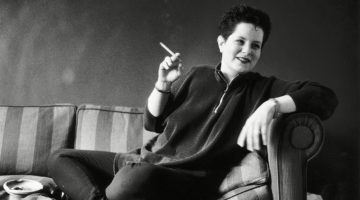Capturing the Grey Zone: Five Questions for Gabrielle Demeestere of Yosemite
Gabrielle Demeestere is the writer and director of Yosemite, which serves as the closing film of Slamdance 2015. The movie is adapted from two of James Franco’s short stories, but has a style all of its own, and travels in very unexpected directions. Yosemite is a very moving character study of three young boys, and plays as a kind of Stand By Me for a modern generation. We spoke to Demeestere via e-mail before the film’s premiere and she provided some very surprising and answers to our questions, meeting us in the middle.
Was it a calculated risk starting the viewer in Yosemite, but then bringing it back to Palo Alto for the later two-thirds of the film?
I wanted to set up a strong visual contrast between nature and suburbia, especially since Palo Alto is an expanding suburb right on the border of California wilderness. Those two worlds collide in the third chapter, when the boys hunt down the mountain lion in the hills above Palo Alto
How did you come up with the motif of the eight-bit video game?
The film takes place in 1985 and I wanted the opening credits to give the audience a sense of the period right away. I worked on them with Pablo Gonzalez from SMOG Studio, and we came up with the idea of animating images of nature, as well as other key images from the film. We made a conscious choice to restrict ourselves to the technology of the period.
Was it emotional for James to be playing a character based on his father / did you find it difficult to give him direction because he *knew* the role?
You would have to ask him, but it was great working with him on a character to which he was able to bring so much personal experience and emotion. Though I had a good sense of the character from reading the short story, we had a conversation before the shoot where we talked about Phil and made sure we were on the same page in terms of what he wanted, what his relationship with his children was at this point in time, etc.
Once on set I didn’t have to give him much direction, since he brought so much of his own back-story to the character. It was more about modulating the mood of each scene to create the rhythm of the first chapter, which is the most atmospheric and the least narrative of the three. For example, when we shot the scene where he teaches his sons about sex, I asked him to try a version of the scene which is more playful and competitive with his older son and less serious, because I knew the audience would need some relief from the overall tension in that moment.
Did working with the three young actors, each bringing something different to the main roles of Chris, Joe and Ted, present a unique challenge?
None of them had really been in a movie before, so there was a general sense of relief and excitement when we started shooting and realized that all three of them were as good on set as they had been in their auditions. They were so natural and easy to work with, and genuinely enjoyed playing and acting with each other. The main challenge to contend with was short shooting days on such a tight schedule (17 days).
Henry’s character’s motivations are hazy, but do you think that the viewer will sympathize or revile him?
People who’ve seen the movie have very polarized reactions to Henry, and I think that’s exciting. My intention was for the audience to see Henry largely through Joe’s eyes: Joe goes from feeling suspicious of Henry to trusting him. As in real life we don’t always know or understand people’s intentions, and that understanding changes over time. That grey zone is fundamentally human and very interesting to me.


